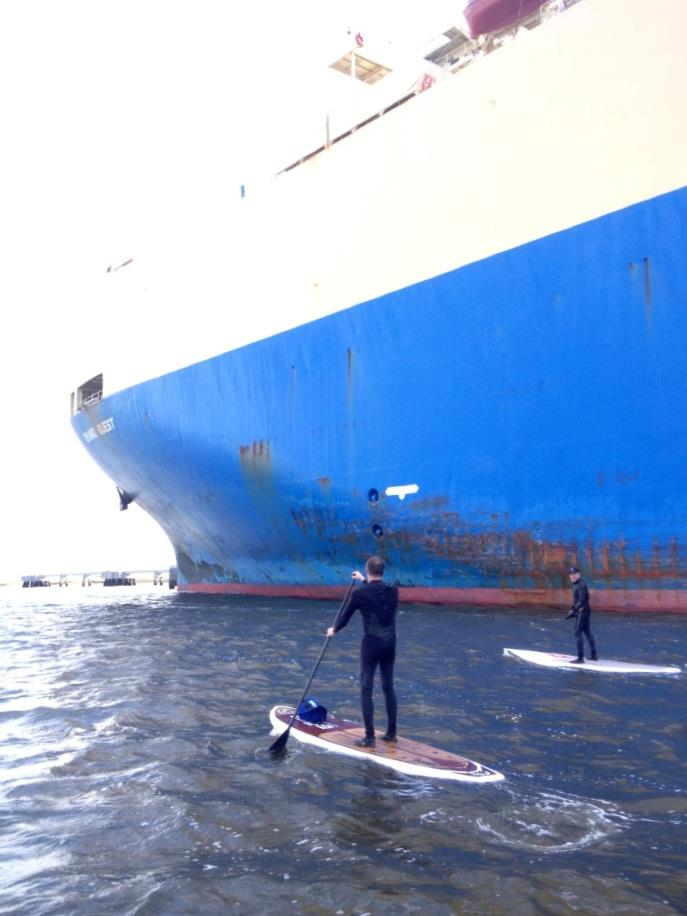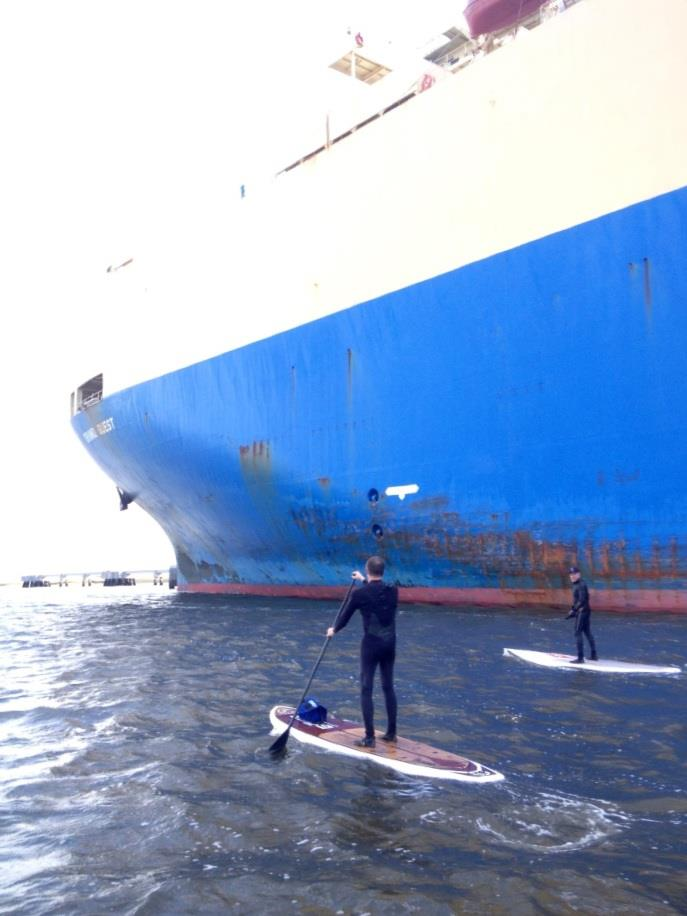
08.29.12
Savannah Harbor Expansion Project Impact on Tybee Beaches Still Unclear
By Surfrider Foundation Georgia
The impact of the Savannah Harbor Expansion Project (SHEP) on the beaches of Tybee Island is still unclear. As discussed in the Surfrider Foundation Atlanta Chapter June 7, 2011 update, the U.S. Army Corps of Engineers SHEP FAQ dated April 11, 2012 indicated Tybee beaches were safe from dredge materials (emphasis added):
30) How are you taking into the account the City of Tybee Island’s concerns about impacts to the beach from the channel?
- We previously determined that the ship channel, as it has existed since the mid-1970s, contributes between 70-80 percent of the reduction in the coastal littoral sediment supply volume to the Tybee shelf and shoreline. This sediment is composed of sands, silts and clays. Further deepening will not change those existing conditions.
- Dredged material was never proposed for the beach re-nourishment. Instead suitable material was to be used for near-shore disposal — about one mile from the shore — in order to help prevent erosion of the beach. We developed our initial proposal in coordination with officials from Tybee Island and the Georgia Department of Natural Resources. However, it was always a proposal and on Jan. 20, 2011, the Tybee Council voted to reject the near-shore placement of dredged material.
- The Corps will instead use a pre-designated off-shore disposal area for material dredged from the outer channel. We had already planned to place much of the outer channel material in this location.
However, the Corps Final Environmental Impact Statement (FEIS) dated January 12, 2012 included the following (emphasis added):
5.00 ENVIRONMENTAL CONSEQUENCES OF THE PROPOSED ACTION
5.04 Sediment Quality5.04.1 Overview
The proposed deepening of the Federal navigation channel to -47 feet MLW would require excavation of approximately 23.6 million cubic yards of sediments. Estimated maintenance dredging of the new deeper Federal channel will require the yearly removal of about 7 million cubic yards of sediments from the river and entrance channels.Sediments of the Savannah River and the nearshore ocean continental shelf are continually subject to movement by wind, tide and strong currents. Redistribution of sediments is, therefore, a natural and continuous phenomenon. New work sediments removed from the entrance channel would be deposited in the [Ocean Dredged Material Disposal Site (ODMDS)] or existing upland CDF. If a non-Federal source of funding is identified, suitable O&M sediments from the entrance channel could also be deposited in the nearshore sand sharing system or directly on the Tybee Island beach. Otherwise, the O&M sediments from the entrance channel would be deposited in the Savannah ODMDS or a CDF.
The Chief of Engineers’ Report on the Savannah Harbor Expansion Project (SHEP) dated August 17, 2012 indicates: "The Georgia Department of Transportation is the non-Federal cost sharing sponsor," and also states (emphasis added):
3. The reporting officers recommend construction of a -47 foot Mean Lower Low Water (MLLW) depth alternative plan to modify the existing Savannah Harbor Navigation Project. The selected plan would require dredging and subsequent placement of 24 million cubic yards of new work sediments. Approximately 54% of this sediment would be deposited in existing upland dredged material containment areas (DMCAs) and about 46% would be deposited in the US Environmental Protection Agency-approved Ocean Dredged Material Disposal Site (ODMDS) or an existing DMCA. The required Site Management and Monitoring Plan for the Savannah ODMDS must be completed and signed by the EPA and the Corps before the EPA can issue a concurrence for disposal of material from the SHEP into the Savannah ODMDS. Any portion of this material that does not meet the Ocean Dumping Criteria must be placed within an upland Confined Disposal Facility (CDF) that has sufficient capacity for the volume of proposed dredged material that does not meet the Ocean Dumping Criteria....
Surfrider Foundation opposes deposits of dredged materials in near-shore locations and on-shore locations. The Final EIS does not identify the final deposit locations, but appears to suggest near-shore and on-shore locations are possible, subject to EPA and Corps approval of the Site Management and Monitoring Plan for the Savannah ODMDS. The earlier Draft Environmental Impact Statement (EIS) identified the following placement sites, among others, for dredge materials (reference Draft EIS pages 3-22 through 3-26) (image):
- The placement of the dredge material at area described as MLW 200 would create a berm about 200 feet wide and 3,200 feet long directly in front the current beach.
- The placement of the dredge material at the area described as MLW 500 would extend from the North Jetty southward for 11,000 feet (2 miles). The dredge material would be placed 500 feet from the beach for the length of the placement site.
- The placement of the dredge material at the area described as ERDC Nearshore would extend seaward from Tybee Island below the MLW contour in the nearshore area. At total capacity, the top elevation of the placement site would be -4 feet so as not to interfere with boaters but such placement would allow potential for movement of material towards the Tybee Island shoreline by wave action. (It is important to note that this location is already reserved as a borrow site for Tybee’s Island’s beach renourishment program.)
- Decrease the natural wave energy in these locations and eliminate natural sources of recreation for the public.
- Have potential safety implications on swimmers, surfers, fishermen, lifeguards, and others.
- Increase environmental and ecological impact in sensitive onshore and nearshore areas, including from dredging materials washing up on beaches (image).
- Produce a negative economic impact on the Tybee Island due to reduced tourism.
- contaminate sand reserved for Tybee Island’s beach renourishment program.
Near-shore and on-shore deposit locations should not be used for dredged materials. The proposed harbor expansion raises substantial concerns over harm to the environment, people, and economy of Tybee Island. A new plan should be prepared to address the identified deficiencies with respect to deposit locations. Pending lawsuits raise other important issues that also need to be addressed.
Please visit our STOP SHEP campaign page for additional updates– Save Tybee’s Ocean Playground.
Steve Combs, Chairperson (email)
Surfrider Foundation Atlanta Chapter
